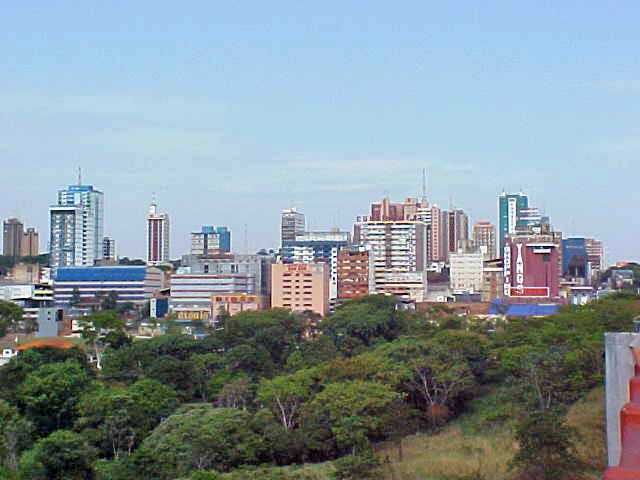
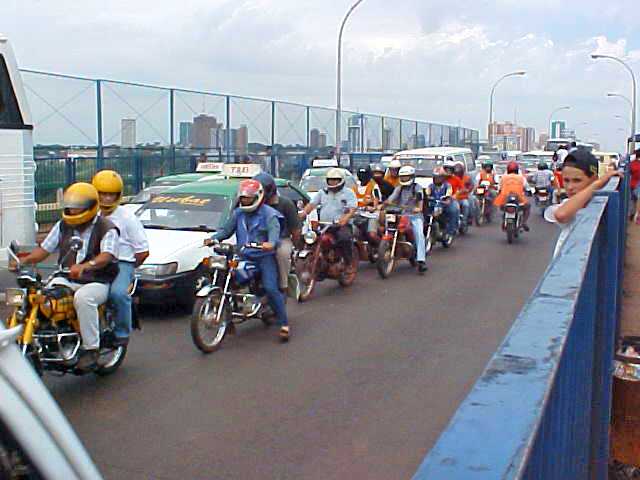
On Friendship Bridge towards Foz do Iguaçu
Buyers and carriers
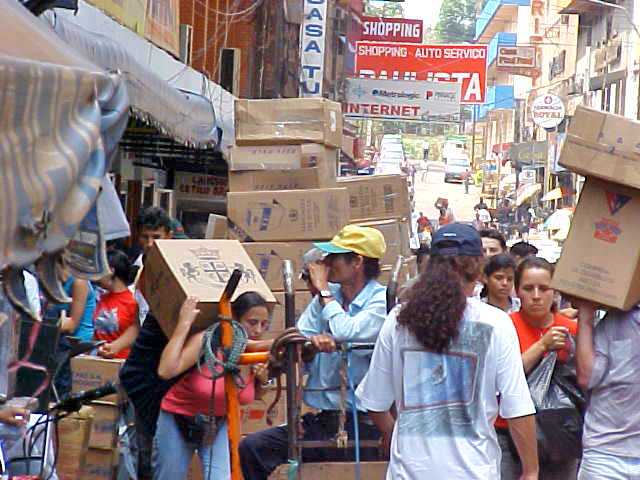
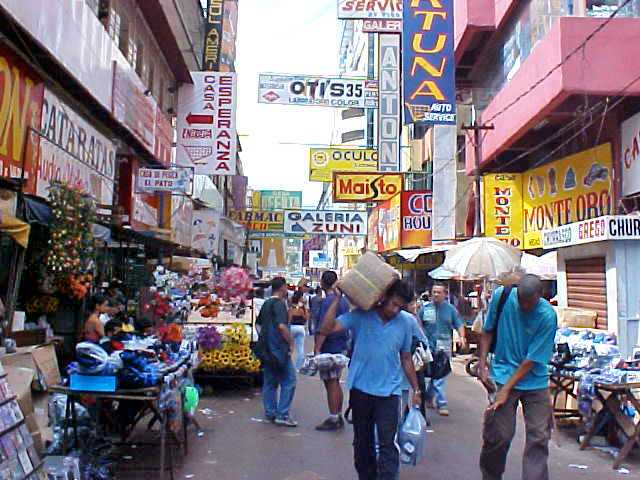
Ciudad del Este downtown
Chiang Kai Shek statue
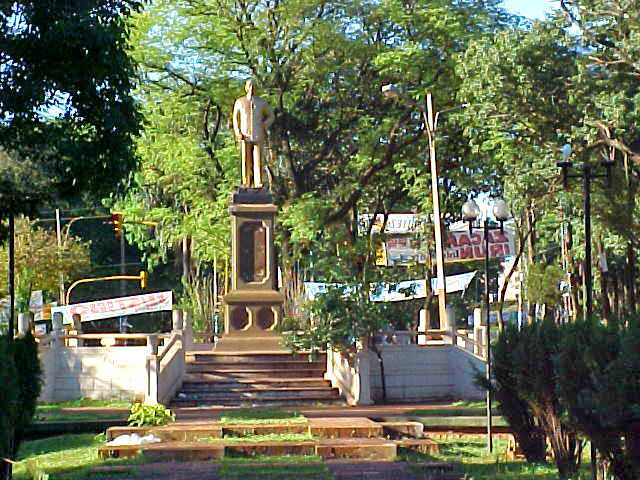
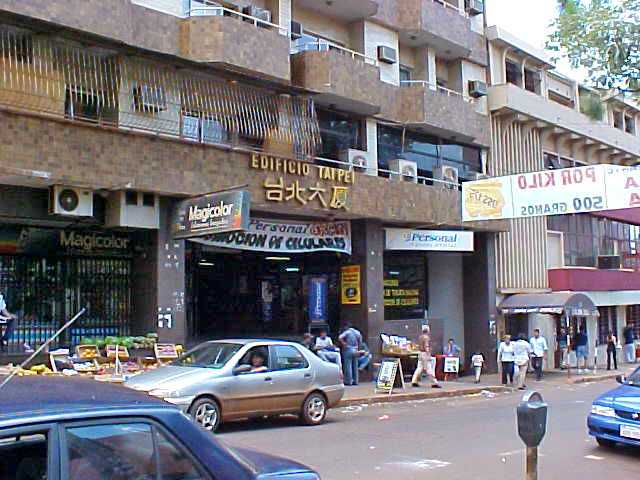
Taipei building, Ciudad del Este
Buddhist Temple, Foz do Iguaçu
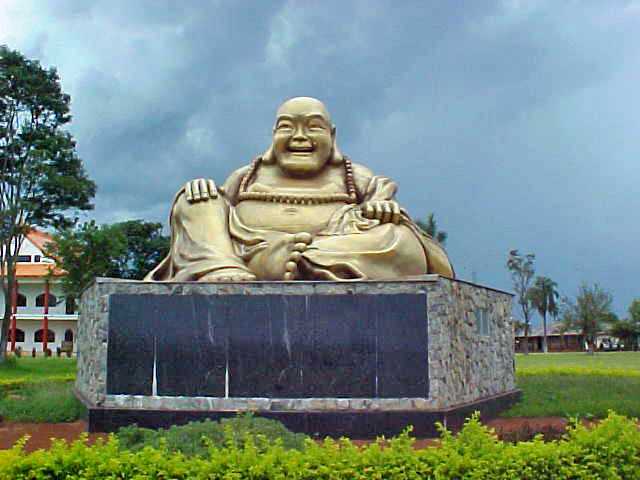
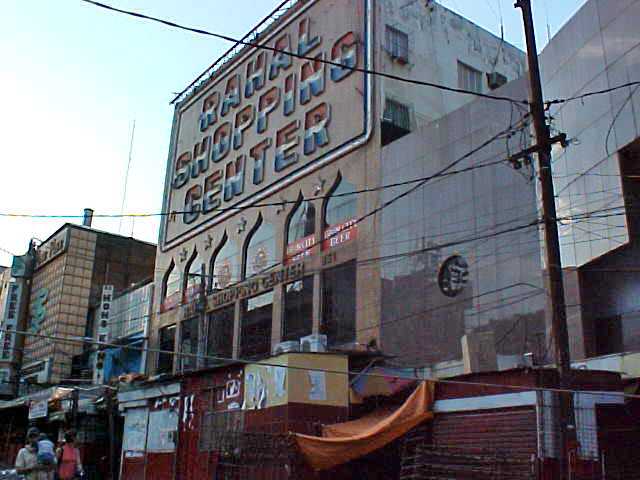
Rahal Shopping Center
Omar Ibn Al-Khatab mosque
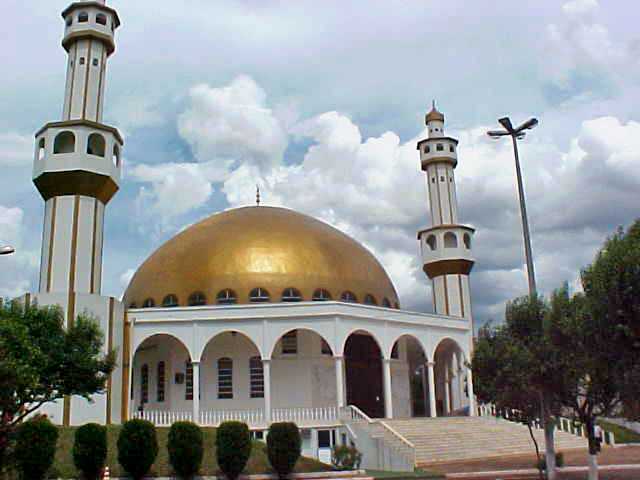
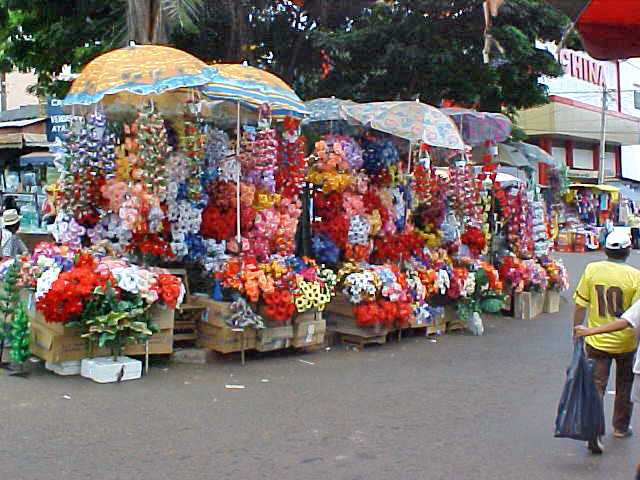
A plastic-flowers stall
A cigarrettes stall
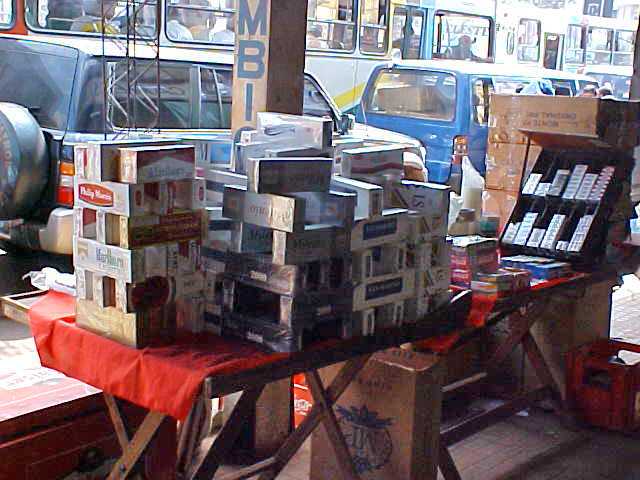
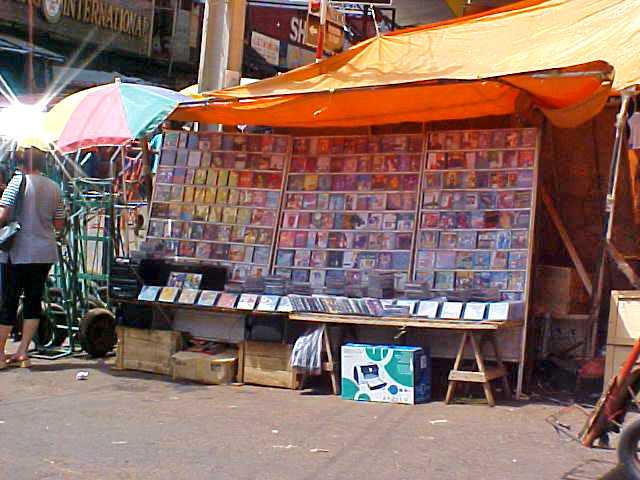
A CD and DVD stall
Irregular commercial structures
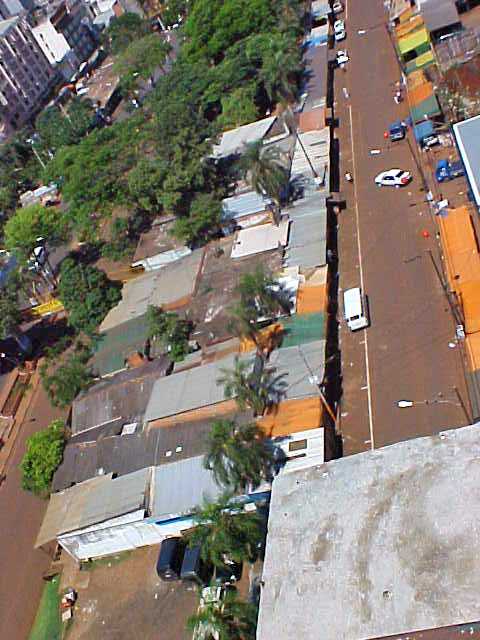
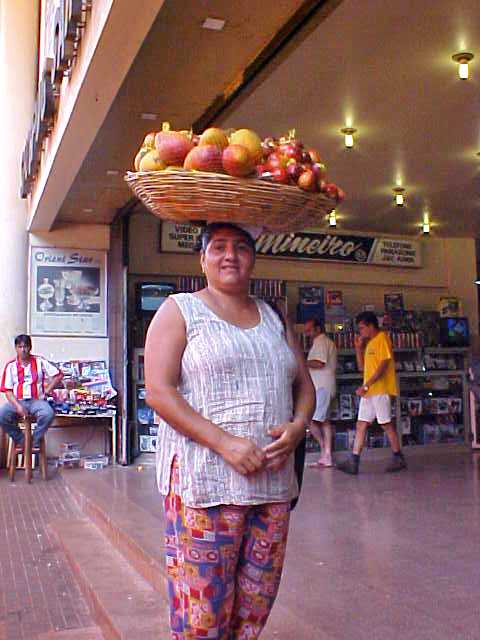
Right: Maria, a fruit seller
Ciudad del Este market in the Tri-Border Region of Paraguay, Brazil and Argentina
The center of Ciudad del Este has developed at the head of the Friendship Bridge that connects it with the Brazilian city of Foz do Iguaçu. It forms a compact commercial area that started as a shopping tourist destination at the end of the 1960s. The Friendship Bridge has been crucial for both the flow of Brazilian merchandise into Paraguay and for the import of goods from across the world, especially from China and East Asia, into Brazil, sold on in Ciudad del Este to traders from all around Brazil.
The market of Ciudad del Este combines street stalls, shops, arcades and shopping centers. Here, irregular appropriation of public space occurs not only at the level of street hawking but also by powerful political actors building shops and malls. Being dependent on buyers from the other side of the border, a range of services involving carriers, transport and storage have developed at both sides in order to facilitate the trade across the border. The large scale of the market operations is supported by a parallel system of mobile vendors providing food and other services to workers and traders in the market.
Migrant groups actively participate in the commercial activities at both sides of the border, especially Lebanese and Chinese traders. Their presence leaves its mark on the city, making itself manifest in commercial structures as well as in religious and other material inscriptions, such as the statue of Chiang Kai Shek in the main square of Ciudad del Este. Other examples include the Taipei building or the Rahal Shopping Center in Ciudad del Este and Pu-Tai (the Laughing Buda) at the Buddhist Temple or the Prophet Mohammed mosque in Foz do Iguaçu.
Fernando Rabossi
Department of Cultural Anthropology
Universidade Federal do Rio de Janeiro (UFJR), Brazil
read more...
read more...
read more...
read more...
read more...
read more...
read more...
read more...
read more...
read more...
read more...
read more...
read more...
read more...